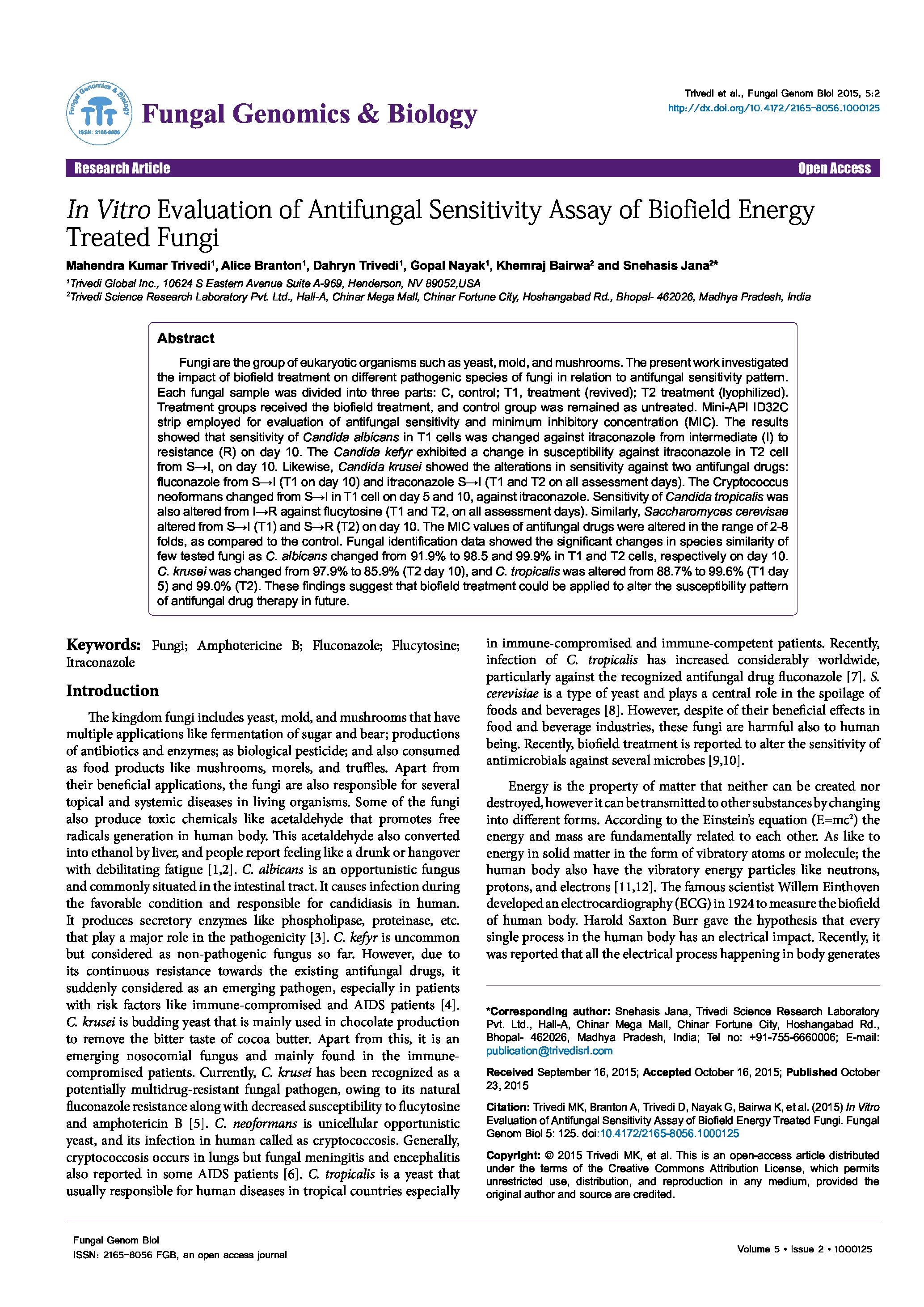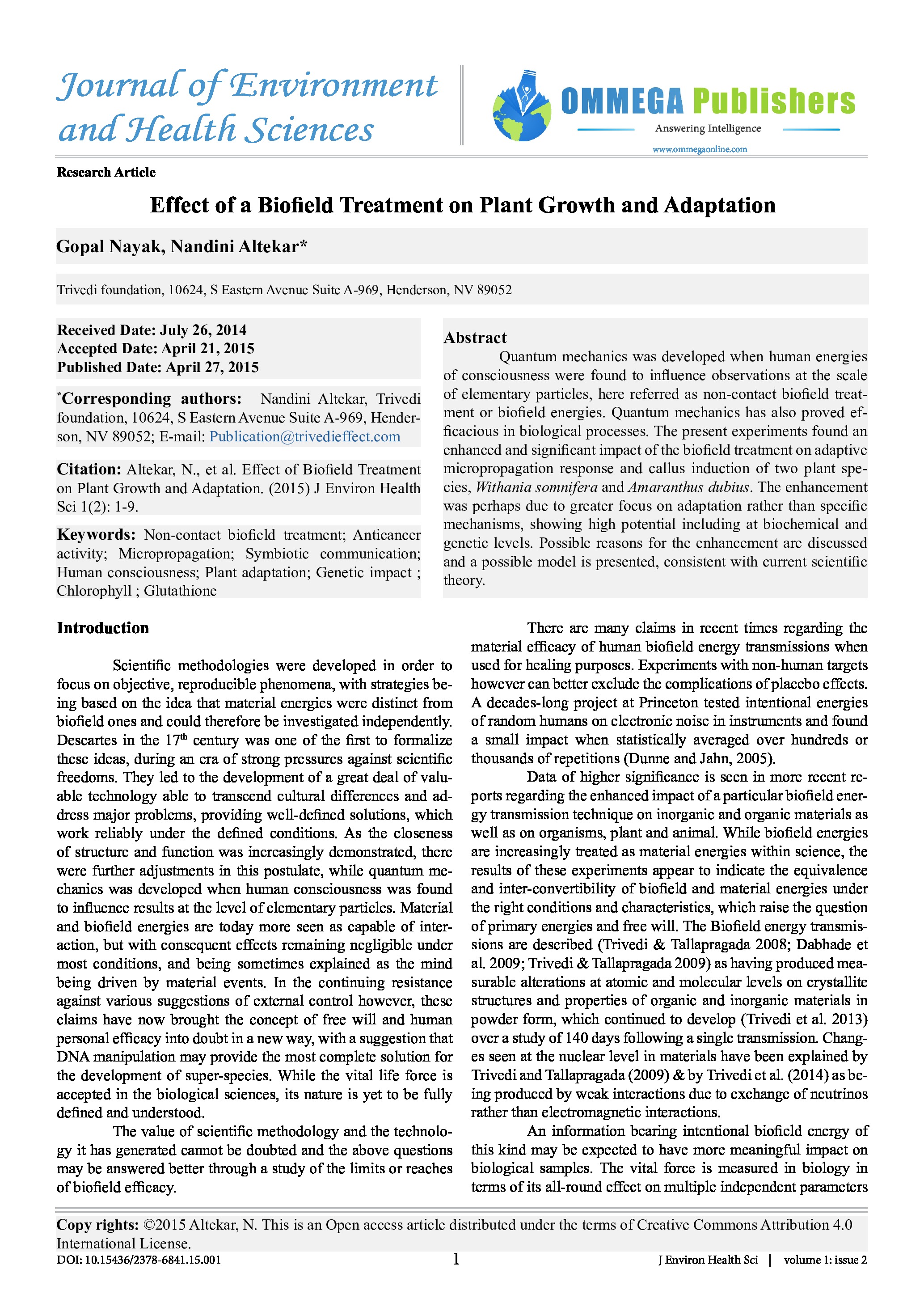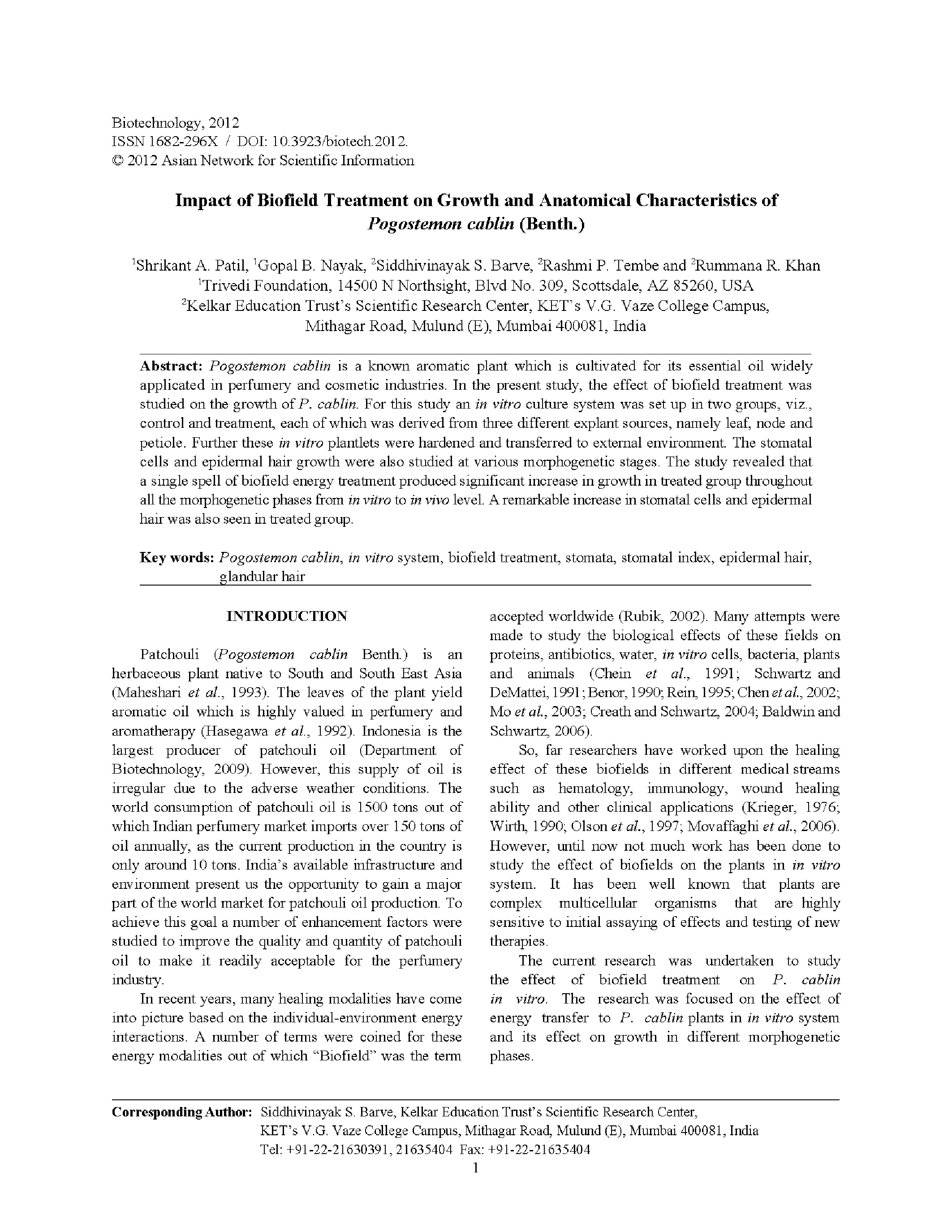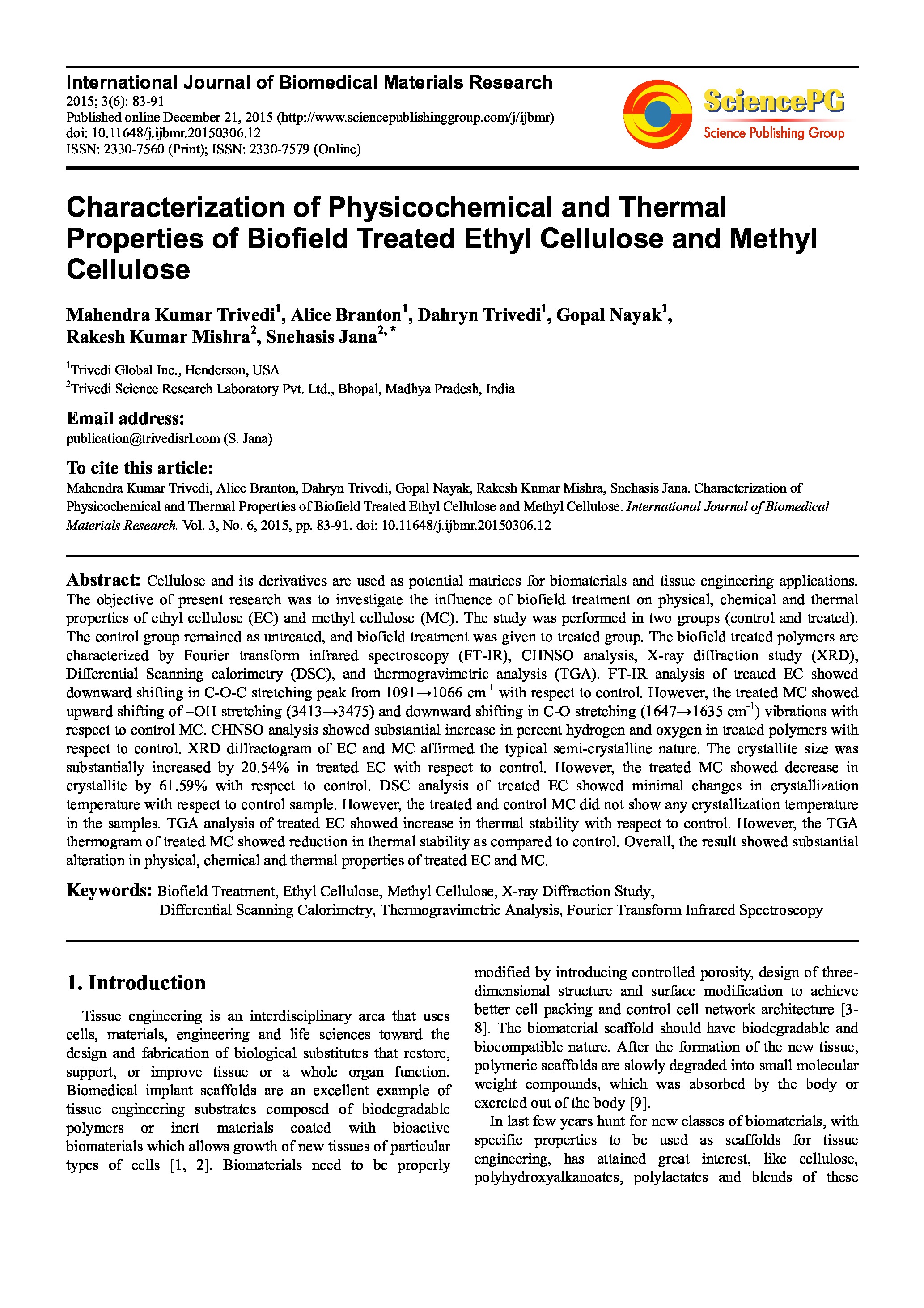Date of upload:
15.12.2016
Co-author:
Mahendra Kumar Trivedi, Alice Branton, Dahryn Trivedi, Khemraj Bairwa, Snehasis Jana
Abstract:
Fungi are the group of eukaryotic organisms such as yeast, mold, and mushrooms. The present work investigated the impact of biofield treatment on different pathogenic species of fungi in relation to antifungal sensitivity pattern. Each fungal sample was divided into three parts: C, control; T1, treatment (revived); T2 treatment (lyophilized). Treatment groups received the biofield treatment, and control group was remained as untreated. Mini-API ID32C strip employed for evaluation of antifungal sensitivity and minimum inhibitory concentration (MIC). The results showed that sensitivity of Candida albicans in T1 cells was changed against itraconazole from intermediate (I) to resistance (R) on day 10. The Candida kefyr exhibited a change in susceptibility against itraconazole in T2 cell from S→I, on day 10. Likewise, Candida krusei showed the alterations in sensitivity against two antifungal drugs: fluconazole from S→I (T1 on day 10) and itraconazole S→I (T1 and T2 on all assessment days). The Cryptococcus neoformans changed from S→I in T1 cell on day 5 and 10, against itraconazole. Sensitivity of Candida tropicalis was also altered from I→R against flucytosine (T1 and T2, on all assessment days). Similarly, Saccharomyces cerevisae altered from S→I (T1) and S→R (T2) on day 10. The MIC values of antifungal drugs were altered in the range of 2-8 folds, as compared to the control. Fungal identification data showed the significant changes in species similarity of few tested fungi as C. albicans changed from 91.9% to 98.5 and 99.9% in T1 and T2 cells, respectively on day 10. C. krusei was changed from 97.9% to 85.9% (T2 day 10), and C. tropicalis was altered from 88.7% to 99.6% (T1 day 5) and 99.0% (T2). These findings suggest that biofield treatment could be applied to alter the susceptibility pattern of antifungal drug therapy in future.




